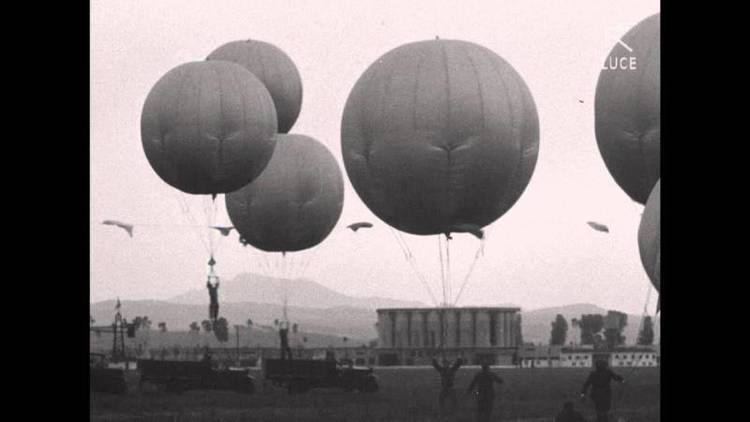


Istituto Luce Cinecittà is the stateowned company whose main shareholder is the Italian Ministry for Culture who subsidies its activities on an annual basis. Its institutional work includes promoting Italian cinema both at home and abroad focusing on great directors of the past as well contemporary ones.
Istituto Luce Cinecittà holds a film and photographic archive of its own productions, and private collections and acquisitions. This historical archive (www.archivioluce.com [2]) collects a more than 12.000 newsreels, 9.000 documentaries, 3.000.000 photos, and several other titles, ranging from films, dating back to the origins of cinema, to collections and film clips of 20th century events. This is one of the largest audiovisual footage collections in Europe concerning the history of the twentieth century, and it has also been nominated by UNESCO Italy [3] for the membership registration in the “Memory of the World registry.”
Istituto Luce Cinecittà is also one of the organizers of Open Roads along with the Film Society of Lincoln Center [4] and with the collaboration of the Italian Cultural Institute of New York [5].
9 x 10 Novanta, which was previewed at the Venice Film Festival, will have its North American Premiere at Open Roads on Tuesday, June 9, 6:30pm.
Istituto Luce's archival images were made available to nine filmmakers in the creation of a collective film in memory of the institute's 90 years of activity. Each director was given full freedom to pick any footage that inspired them and to paste together a film focused on any topic they wanted and shot in any style. The only limitation? Time. Each short had to last ten minutes.
As each director, Marco Bonfanti, Claudio Giovannesi, Alina Marazzi, Pietro Marcello, Sara Fgaier, Giovanni Piperno, Costanza Quatriglio, Paola Randi, Alice Rohrwacher and Roland Sejko, gives their personal spin on the past, “their collective effort emphasizes the striking contrasts that comprise Italy’s recent history: from wartime to peace, from ruins to reconstruction, and from Fascism’s lost promised futures to the present day. Startling, moving, and, above all else, inventive, this omnibus reshapes and gives light to rare material unseen for decades,” representatives of the Film Society at Lincoln Center have said.
The first short of 9x10 Novanta is by Giovanni Piperno and it is titled Miracolo italiano (Italian miracle). It is a montage of images of the different Madonnas and saints that have been worshipped through the decades all over Italy. Some of these statues have cried, some have bled, others have appeared in a vision and they have even spoken to people. Their message? To keep believing, because there is always room for hope, no matter how your personal life is going or how your country is doing. Italy needs faith to go on, and this was valid now as it was back then!
The last short of the film is by Pietro Marcello and Sara Fgaier. It is titled L'umile Italia (Humble Italy) and it brings together images of landscapes and people working in the country, day after day. These are images of poverty but also of dignity. These are images of rules, secular traditions, harmony, and respect for nature. Something that built Italy and that give a reason to live and fight to people then... something that Italy needs now. The past comes to teach us how to live the present.
Una canzone (A Song) is the title of the ten minutes authored by Alice Rohrwacher, who travels through memory thanks to favorite songs... songs that are linked to places, situations and feelings. Images of the Great War inspired Alina Marazzita to come up with Confini (Borders). Never ending lines of soldiers carrying in the snow heavy artillery show the physical but also the internal fatigue of the men of that time. They are men of the trenches who are working on an epic and absurd quest: they are building a border on top of a snowy mountain.
L'entrata in guerra (Italy goes to War) by Roland Sejko reconstructs different moments of life of the day June 10, 1943, as per the beautiful autobiographical tale by Italo Calvino. The narrative style shifts for Marco Bonfanti's Tubiolo e la Luna (Tubiolo and the Moon), a fairy tale that tells the popular story of a boy who, all through his life, with Italy's history in the background, dreams of getting to the Moon.
Two shorts by two women directors particularly stand out: Progetto panico (Panic Project) by Paola Randi imagines that a group of archaeologists come from the future to discover a dramatic phenomenon of our time: feminicide through the institution of marriage in Italy from the 1900's to today. In Il mio dovere di sposa (My duty as a bride), Claudio Giovannesi uses archival images from 1934 to 1943 to illustrate the diary of a Catholic woman, Vittoria, who expressed all her anxieties and guilt because she could not be a good wife... she could not make love.
9X10 Novanta is a look at Italy's past: despite their differences, unique stories, individual styles and narrative voices all come together in one message. Italy is one, has always struggled and the struggles continue. Strength can be found in anything as long as people believe.
Source URL: http://newsite.iitaly.org/magazine/focus/art-culture/article/celebrating-90-years-istituto-luce-cinecitta-9x10-novanta
Links
[1] http://newsite.iitaly.org/files/maxresdefault1433444753jpg
[2] http://www.archivioluce.com/archivio/
[3] http://whc.unesco.org/en/statesparties/it
[4] http://www.filmlinc.com/
[5] http://www.iicnewyork.esteri.it/IIC_Newyork